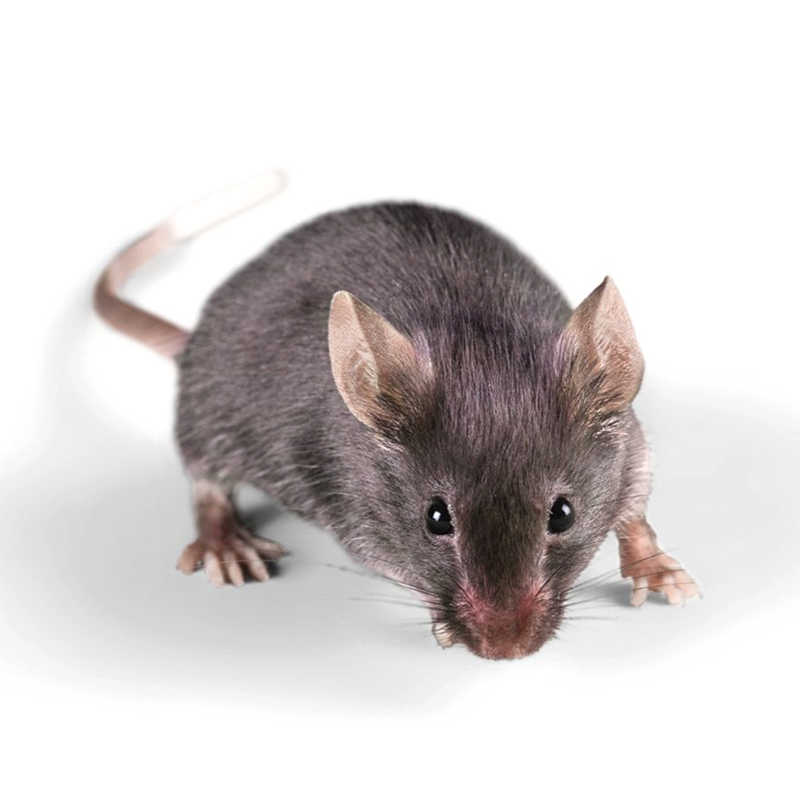
Mus domesticus
Color: Light brown to black.Shape: Round or oblong.
Size: 2 inches.
The house mouse is the most common rodent in most parts of the world. With an ability to breed rapidly and adapt to changing conditions, this adorable pest is especially prolific among rodents.
Mouse Living Habits
Feeding on grains, oats, and corn, house mice breed year-round, having as many as 10 litters a year. Born less than 20 days after mating, young mice are ready for reproduction within 2 months, allowing for exponential population growth.
Due to their ravenous appetites, even small populations of mice can inflict lasting damage and contaminate uneaten food with droppings, urine, and saliva. Agile climbers and jumpers, mice can enter your home through cracks and holes barely visible to the human eye.
With lifespans of less than a year, mice can live outdoors, but they prefer living in structures, often alongside humans.
Mouse Infestation Health Risks
While mice are cute to look at, even microdroplets of mouse urine can cause allergies in children, and mice can bring dangerous pests like fleas, mites, ticks, and lice into your home.
In rare cases, mice can be carriers of the Hantavirus pulmonary syndrome (HPS), a serious respiratory disease transmitted by infected rodents through urine, droppings, or saliva. Anyone who comes into contact with the Hantavirus is at risk for HPS, and humans can contract the disease just by breathing in aerosolized virus.
To keep from contracting HPS, always clean up rodent urine or droppings with a wet mop. Avoid cleaning methods like vacuuming, which could aerosolize the rodent urine or feces and spread the disease.
Signs of a Mouse Infestation
Though mice enter homes in a variety of ways, telltale signs of an infestation include:
- Droppings, less than a quarter inch in size and pointed at both ends.
- Gnawed or chewed plastic, cardboard, or furniture.
- Rodent sightings.
- Musky odors, particularly around nesting areas.
- Nests made of shredded fibers and found materials like shoeboxes and storage crates.
- Urine odors.
- Small tooth marks that look like scratches.
- Dime-sized gnawed holes.
- Squeaking and scampering noises.
- Unusual pet behavior.
- Oily marks from mice running along walls and other rodent pathways.
While new mouse droppings have a shiny, putty-like texture, old droppings are hard and crumbly. Different dropping sizes could indicate the presence of juveniles and adults, which could be a sign of a large-scale infestation. The location of these droppings is a good indication of where you should place bait and traps.
Typically nocturnal, rodents tend to make scratching sounds as they run inside walls, along floors, foundations, ledges, pipes, electrical wires, tree branches, and fence rails.
Pets tend to behave strangely when they smell the presence of rodents. They may vocalize, appear extremely alert, or paw at spaces beneath refrigerators, stoves, or other furniture.
Entering homes through tiny holes and cracks, it doesn’t take much to sustain these little critters as they can live on crumbs. And while you may not notice the presence of one or two mice, you may soon end up with a full-blown infestation.
How to Prevent Mice from Entering Your Home
While cats and terriers are especially adept at hunting mice, other natural repellents include mint or peppermint, bay leaves, mothballs, or kitty litter, which can be left near the corners of baseboards, closets, and doors.
To prevent mice from invading, clean your home and remove any clutter where mice could hide, including piles of clothing, books, and cardboard boxes, which make great nests.
Wash floors and vacuum carpets to get rid of any crumbs and hairballs that could serve as meals or nesting materials. Seal trash cans, wash dishes, clean up spills, put away pet food, and store all foods in sealed storage containers off the floor.
When it comes to the outdoors, rake up any stray nuts and berries, remove brush piles, store firewood away from your home, keep birdseed confined to dedicated feeders, and seal trash cans.
Be sure to inspect the exterior of your home and seal any cracks where mice could enter. Since mice can squeeze through holes the size of a nickel, holes bigger than ¼ inch should be sealed with sheet metal or concrete mortar.
How to Remove Mice from Your Home
Mice are not likely to leave a home once they feel safe and have adequate food and water. To prevent an infestation, set a minimum of 6 mousetraps upon detection before they have a chance to breed.
Using mouse traps or glue boards, place traps along baseboards and walls where live mice are known to congregate. Check the traps daily and remove and reset whenever necessary. Cease trapping when you stop seeing droppings for several days.
If you suspect an mouse infestation problem, contact Rochester Pest Pro for a quote.
